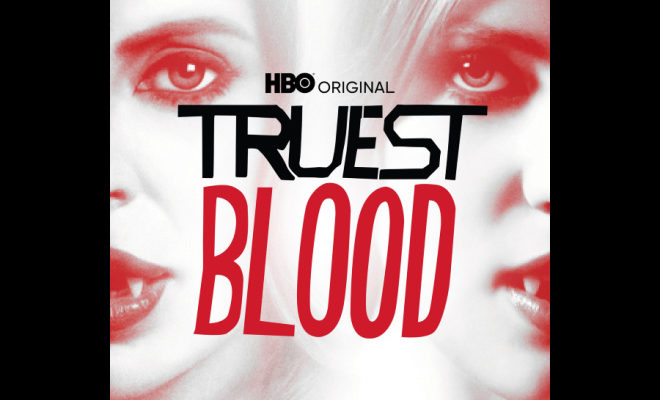How to Make a Vampire
Magister: Our records indicate that you have never been a maker.
Bill: Yes.
Magister: But you know the procedure?
Bill: Yes.
Magister: Then proceed. (S1 Ep 9 True Blood)
Being made Vampire is a fairly simple process on the outside, but what really happens when a Vampire is made? What happens to their humanity, their human soul, and their relationship with world around them? And when did it all start?
One of the most ancient texts about Vampires comes from the Greeks. Lamia was a female monster who fed on the blood of children and virgins and unfaithful men. In the Christian Bible, Lamia is mentioned many times and may refer to the Jewish legend of Lilith. Lilith was the first wife of Adam and she was created from the earth, as Adam was. Because she was created like Adam, she demanded equal rights and that included equal sexual rights. Namely that she be allowed on top when they had sex. Adam goes to God and complains about Lilith’s willfulness and the fact that he has to hold her down to have sex with her. God decides to kick Lilith out of the garden. When Lilith is exiled into the wilder world, she swears that she will revenge herself on Adam and his new wife Eve.
God hears her oath and he condemned her to live only at night and to be as the animals, to crave blood and raw flesh. When Adam and Eve are themselves evicted from Eden, Lilith goes to work on her revenge.
The Vampiric story also seems to be linked to the belief in incubus and succubus. Incubus is a male demon who preys upon sleeping women and has sex with them to reproduce. Succubus is the female version. This also draws in the sexual element of the Vampire legend. In Jewish custom, and in Christian Demonology, Incubus and Succubus were thought of as demons of lust. They were the things that cause nocturnal emmissions in men (night climaxes) and sexual aggressions in women (being forward enough to demand her husband’s sexual favors) This harkens back to the old Jewish laws of Oananism (masterbation)
How incubus and succubus come into the Vampire mythology is a little hazy. People who study the Vampire myth say that the demons enter into the Vampire story because of sexual politics. The ancient Catholic Church was very against women demanding anything. Women were the daughters of Eve, and by definition, are evil and we have to submit to the Christian will of husbands, fathers, brothers and sons. Very strict. And if a woman becomes as a man in her carnality, she will suck the sacred soul out of man right into the clutches of the devil. ( Very Vampire-like)
Then as women were being persecuted during what my witchcraft friends call the Burning Times, women were forced to confess to all sorts of crimes, most of them sexual, especially of causing impotence and of committing sexual crimes and one of those were seduction. And it was thought the women who practiced seduction were possessed by succubus. Males who were considered witches, were then considered to be incubus.
To become Vampire, one must be completely drained of their blood and have their blood replaced by the blood of their maker. This is a standard in all of the Vampire lore. The notion of choice is a bit dodgy because the choices are become a Vampire or die.
According to Montague Summers, another way to become Vampire is to die a werewolf. If you die a werewolf, after seven days you will rise as Vampire. Some details of this change is different based on culture, for example, in Eastern European legends, the dead werewolf must be exposed to moon light. In other cultures the grave must be jumped by a black cat (bringing in a mild witchcraft connection).
Many historical figures have been associated with Vampirism, like Vlad Tepes, the Impaler, also known as Dracul, which translates as dragon (a medieval symbol of the devil) and the Countess Elizabeth Bathory, who believed bathing in and drinking the blood of virgins kept her young, contributing further to the belief in Vampires natural immortality and the fact they are physically frozen at the age they were turned.
The legends of Vampire may have also been cemented firmly in our psyche by reports that bodies exhumed from their graves often appeared quite healthy and even alive by those who dug them up. The bodies were often then subjected to rituals to keep the bodies in the grave: the stake through the heart, garlic in the mouth (or some other barrier), beheading and being buried head down in a vertical manner.
Blood being both sacred and taboo, is the life giving element of the Vampire. It is the blood that gives them their strength and supernatural abilities. But with the dawn of Christianity, it takes on the element of sacrilege as it seems to imitate the act of Holy Communion. In this way, Sprenger and Kramer, who wrote the Malleus Malficarum , believed that those who practiced Vampirism were damned. They cite the Old Testament decree that believers would consume no blood ( a part of Jewish Kosher laws) because blood was the life.
In the late 1700’s, a great deal of Vampire literature began to be printed. Among those who wrote some of the first Vampire literature, firmly setting the various elements of the Vampire myth was Gordon, Lord Byron who wrote Vampyre: A fragment and his friend, Dr. John Polidori who wrote his book, entitled “Vampyre”. But the most famous of the Gothic tales of the Vampire is Dracula written by Irishman Bram Stoker. When you say Vampire in today’s culture, the first name that comes to mind is Dracula.
While Stoker may have been writing a horror story, it was actually a metaphor for his difficult relationship with a a famous actor of his day, whom he worked for. This actor was a difficult man to deal with and often Stoker felt that the very life was being sucked from him when he was in the man’s company. After leaving the actor’s employ a final time, Stoker went to stay in the Stoker Hotel in Dublin and began to write a story about a man of infinite charm and the power to control those around him and the power to drain them of their very being. He enmeshed this tale with the tales of Vampires and the legend of Vlad Tepes and gave birth to the modern Vampire tale we enjoy today.
Source: The Encyclopedia of Vampires, Werewolves, and Other Monsters Rosemary Ellen Guiley, The Werewolf in Lore and Legend
by Montague Summers, The Werewolf in Lore and Legend by Montague Summers and Malleus Malficarum by Kramer and Sprenger and The Annotated Dracula by Bram Stoker and edited by Matthew Crum








4 Comments